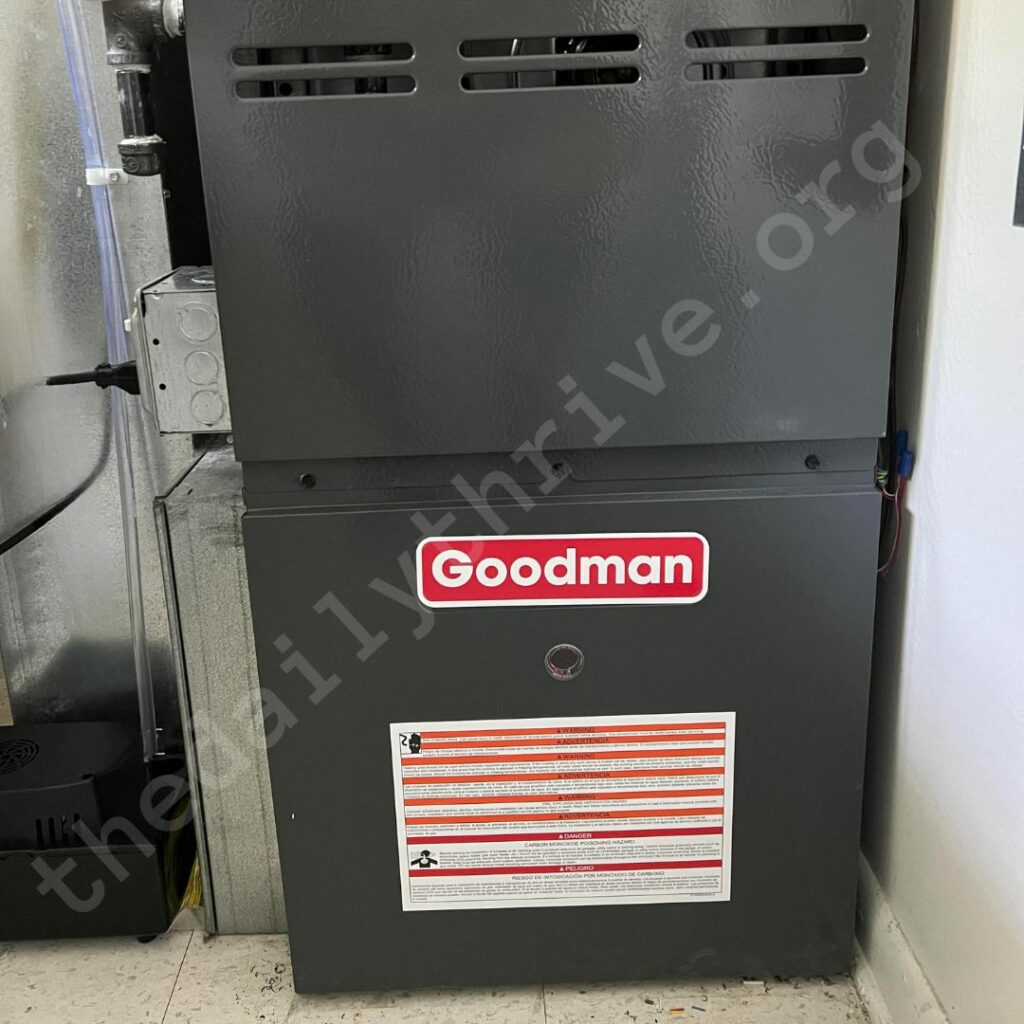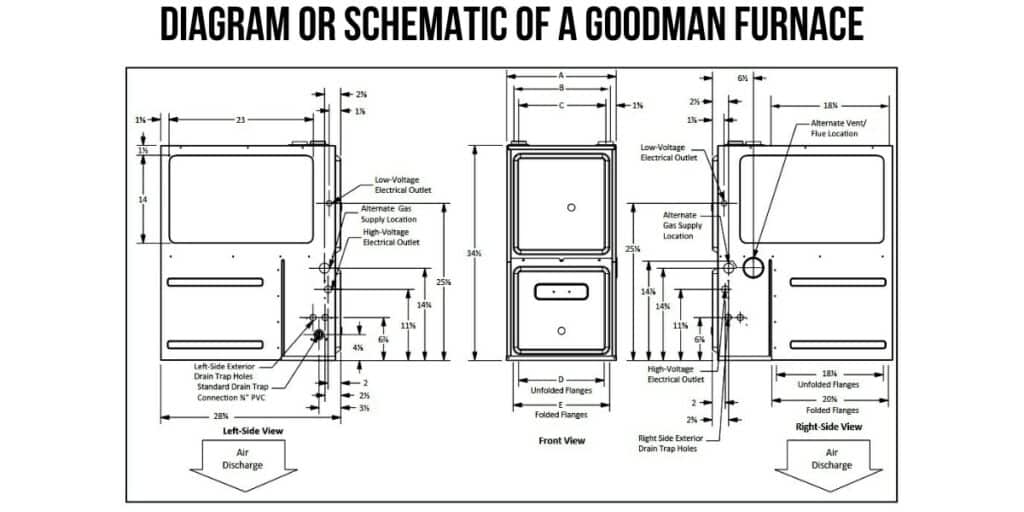Keeping your Goodman furnace in top-notch condition is essential for a cozy home and efficient energy usage. A critical step in furnace maintenance or repair involves accessing its internal components, which starts with removing the access panel. This comprehensive guide will provide step-by-step instructions and important safety tips to remove your Goodman furnace’s access panel safely.
Safety should always be your top priority when working on your furnace. Before beginning, ensure you have turned off the furnace’s power and gas supply. If you’re ever in doubt about the process, don’t hesitate to consult the furnace manual or seek assistance from a qualified HVAC professional.
Locating the Furnace Access Panel

Goodman furnaces come in various models, each possibly having a slightly different design for the access panel. Typically, you’ll find the panel on the front or bottom of the furnace. It may be secured with screws, clips, or both. Refer to your furnace manual or look up online resources for model-specific guidance.
Essential tools for the Job:
- Screwdriver: Choose a flathead or Phillips screwdriver based on the screws on your panel.
- Pliers: Useful for handling clips or tight screws.
- Flashlight: Visibility aids when working inside the furnace.
- Work Gloves: Protects your hands from sharp edges and dirt.
Step-by-Step Process to Removing Your Goodman Furnace Access Panel
Removing the furnace access panel requires careful attention to ensure safety and prevent damage. Follow these step-by-step instructions to safely open your Goodman furnace for inspection or repair.
1. Ensure Complete Power and Gas Shutdown
Before touching any part of the furnace, turning off the power supply is essential. Locate the power switch on the furnace or the main circuit breaker.
If your Goodman furnace runs on gas, turn off the gas supply. This is typically done at the gas valve located near the furnace.
2. Locating the Access Panel
The access panel is usually positioned on the front or bottom section of the Goodman furnace. Look for a metal or plastic door or cover that appears to be removable.
Be aware that the location and design of the access panel can vary slightly depending on the specific Goodman model.
3. Understanding the Fastening Mechanism
Check how the panel is secured. It might be fastened with screws, clips, or a combination of both.

Prepare a screwdriver (either flathead or Phillips, as needed) if the panel is screwed in place. Pliers might be helpful if there are clips.
4. Careful Removal of the Panel
Start by gently unscrewing or unclipping the panel. Proceed cautiously to avoid stripping screws or breaking clips.
Be aware of any wires or hoses connected to or behind the panel. Handle these with care to avoid dislodging or damaging them.
5. Handling the Panel
Be prepared to support the weight of the panel as you open it. Some panels can be unexpectedly heavy or awkward to handle.
Once removed, place the panel in a safe area where it won’t be stepped on or damaged.
6. Accessing the Furnace Interior
With the panel removed, you can access the furnace’s internal components, including the blower, filter, motor, and electrical connections, for necessary maintenance or repair.
Additional Tips for a Smooth Process
- Photographic Reference: Before removing anything, take pictures for easy reassembly.
- Labeling: Label any disconnected wires or hoses to avoid confusion during reassembly.
- Gentle Handling: Treat the panel and internal components carefully to avoid damage.
- Know Your Limits: If a repair seems beyond your comfort level, don’t hesitate to contact a professional.
By following these steps and adhering to safety precautions, you can confidently remove the access panel of your Goodman furnace.
Removing the access panel of a furnace is a common initial step for several types of furnace maintenance and repair tasks.
Here are some key tasks that typically require accessing the interior of the furnace by removing the panel:
- Routine Inspections and Maintenance: Regular check-ups often involve visual inspections of the furnace’s internal components, such as the blower motor, fan, belts, and wiring. Removing the access panel allows you to examine these parts for any signs of wear or damage.
- Filter Replacement or Cleaning: Most furnaces have a filter that needs to be cleaned or replaced regularly to ensure efficient operation and good air quality. Access to the filter usually requires opening the furnace’s panel.
- Diagnostic Checks: If the furnace is not operating correctly or efficiently, removing the access panel allows you to perform diagnostic checks. This could include inspecting the heat exchanger, burners, and ignition system for problems like cracks, blockages, or malfunction.
- Blower Maintenance: The Goodman furnace blower motor and its components are crucial for circulating air through the system. Accessing the blower for lubrication, cleaning, or replacing parts like belts and fan blades necessitates removing the panel.
- Electrical Repairs and Troubleshooting: Electrical issues, such as problems with the control board, wiring, or switches, can be diagnosed and repaired only after gaining access to the furnace’s interior.
- Thermostat Calibration: If you need to calibrate or check the thermostat connections within the furnace, you’ll need to remove the access panel to reach the relevant components.
- Ignition System Repairs: Whether it’s a pilot light or an electronic ignition system, any repair or adjustment requires access to the furnace’s internal parts.
- Ductwork Cleaning and Inspection: While not directly involving the furnace’s internal mechanics, cleaning and inspecting the ductwork sometimes requires access through the furnace’s main body.
- Sensor Cleaning or Replacement: Furnaces contain various sensors, like flame sensors and thermocouples, which may need cleaning or replacement. Accessing these parts requires opening the furnace.
- Noise Diagnosis: If the furnace is making unusual noises, opening the access panel allows you to check for loose components, obstructions, or other issues that might be causing these sounds.
Successfully removing the access panel of your Goodman furnace is a critical step in performing DIY maintenance or addressing specific repair needs. By following these steps, you ensure a safe and effective way to access the interior of your furnace, paving the way for a well-maintained and efficiently operating heating system. Remember, if you feel unsure or encounter complications at any point, it’s advisable to consult a professional HVAC technician.






